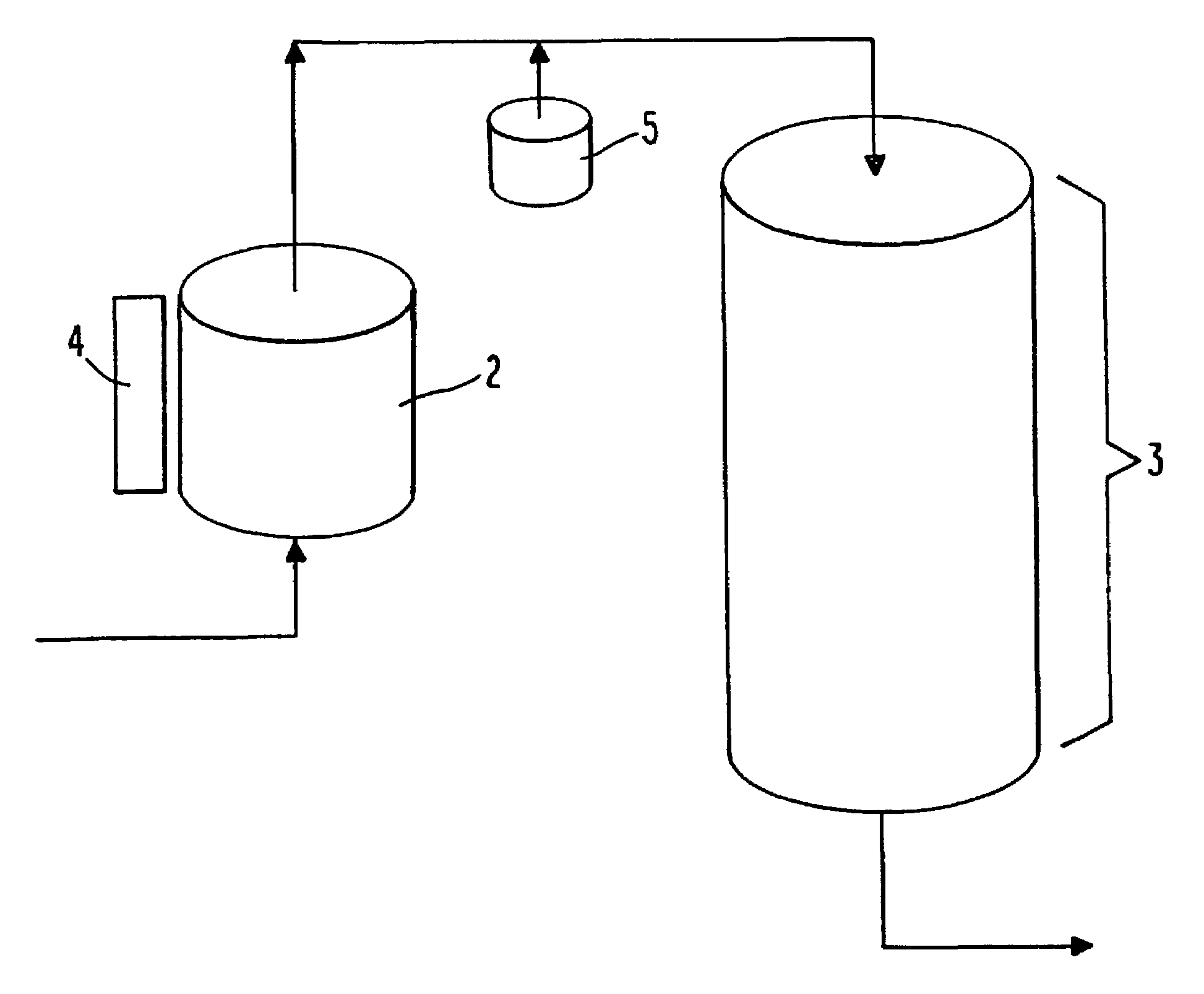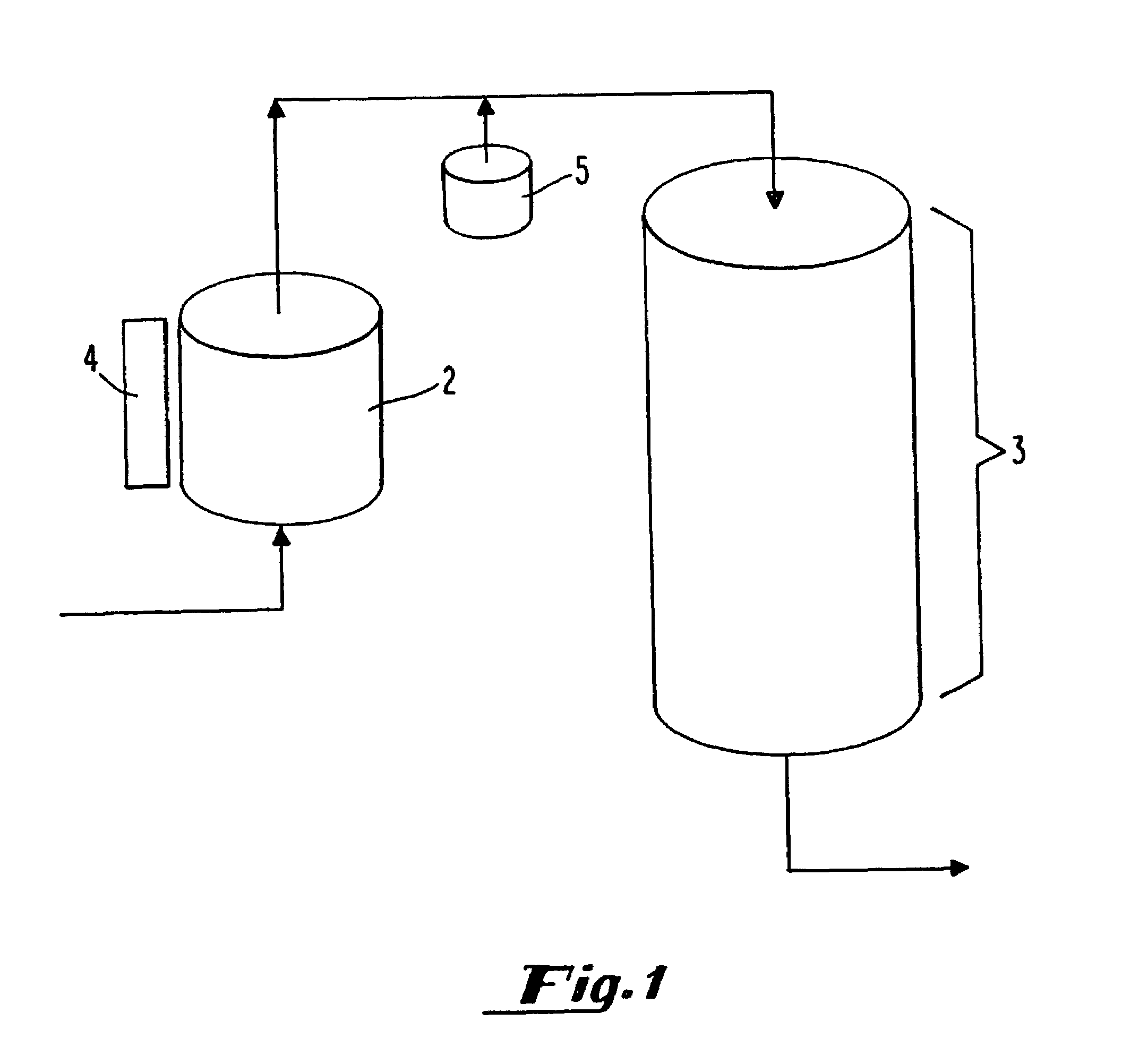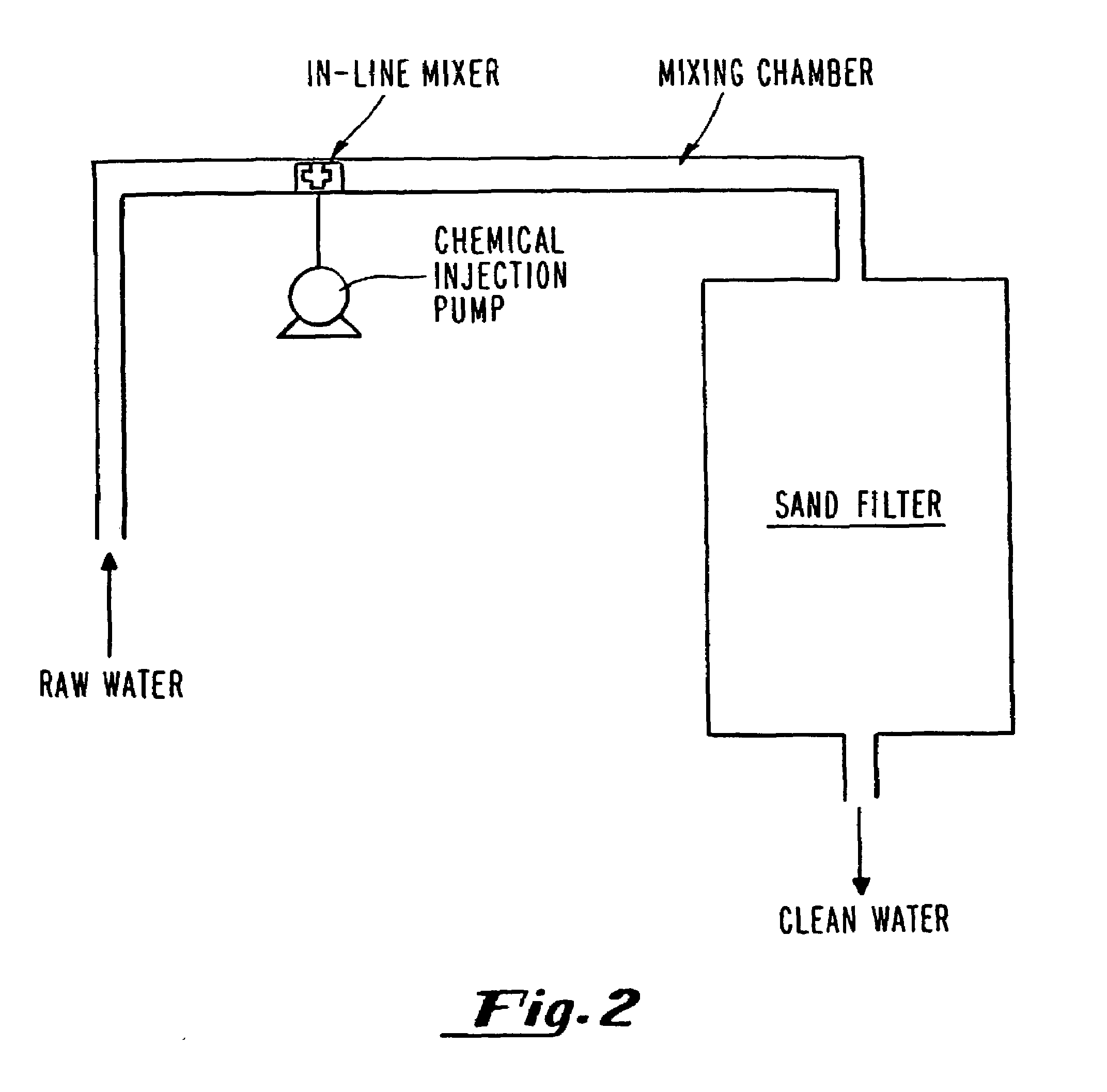Iron powder and sand filtration process for treatment of water contaminated with heavy metals and organic compounds
a technology of heavy metals and organic compounds, which is applied in the direction of multi-stage water/sewage treatment, separation processes, other chemical processes, etc., can solve the problems of reducing the efficiency of iron filters, reducing the hydraulic conductivity of iron beds, and iron particles in filters rapidly forming mass, so as to enhance the removal of contaminants from water and increase the efficiency of contaminant removal
- Summary
- Abstract
- Description
- Claims
- Application Information
AI Technical Summary
Benefits of technology
Problems solved by technology
Method used
Image
Examples
Embodiment Construction
[0012]The present invention is a water filtration device which comprises a continuously or intermittently vibrated iron bed filter or filters and a sand filter. In this device, the fusion of iron particles in the filter, a drawback to previous iron filters, is prevented by continuous or intermittent vibration with an external or internal source of vibratory energy or by continuous mixing with an auger. Most of the water pollutants are removed by the iron filter or filters. The residual pollutants in the iron filter effluent are further precipitated with ferric ions generated by corrosion of iron particles and oxidation. The precipitates are removed directly by the sand filter. The iron filter can also be eliminated from the system to form a direct co-precipitation filtration process for the treatment of water containing low levels of contaminants.
[0013]In a preferred embodiment, the device of the present invention consists of at least two filters in series, an iron filter 2 and a sa...
PUM
| Property | Measurement | Unit |
|---|---|---|
| frequency | aaaaa | aaaaa |
| frequency | aaaaa | aaaaa |
| frequency | aaaaa | aaaaa |
Abstract
Description
Claims
Application Information
 Login to View More
Login to View More - R&D
- Intellectual Property
- Life Sciences
- Materials
- Tech Scout
- Unparalleled Data Quality
- Higher Quality Content
- 60% Fewer Hallucinations
Browse by: Latest US Patents, China's latest patents, Technical Efficacy Thesaurus, Application Domain, Technology Topic, Popular Technical Reports.
© 2025 PatSnap. All rights reserved.Legal|Privacy policy|Modern Slavery Act Transparency Statement|Sitemap|About US| Contact US: help@patsnap.com



